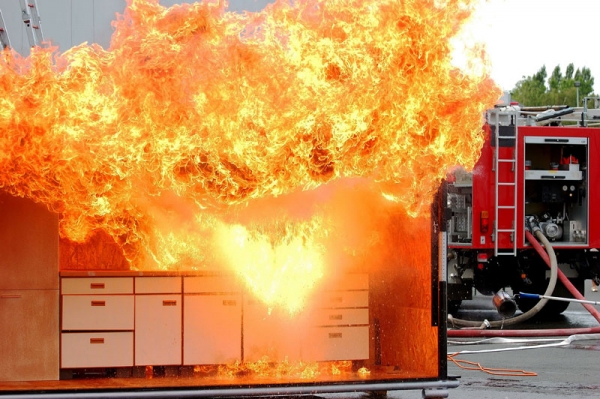HOW DO KITCHEN FIRE SUPPRESSION SYSTEMS WORK? (2)
If you're concerned about the risk of fire in your kitchen, you may want to consider buying kitchen fire suppression systems. But before installing one, it is important to look at whether this type of system is right for you, and to think about how the installation works to put out fires.
There are several different types of private, association or council run residences that could benefit from installing kitchen fire prevention systems. These include restaurants, student blocks, hostels, private or publically owned blocks of flats, studio flats, short stay apartments, or rooms to let – all buildings where there are likely to be a number of small cooking hobs and appliances.
Although fire extinguishers and fire blankets are useful fire-fighting equipment to have to hand, you cannot guarantee that the tenant will know how to use it in a panic, or remember where it is installed under the pressure of a fire (especially if they fell asleep with the chip pan on). Instead a kitchen hood fire suppression system is much more effective, as it operates automatically if a fire breaks out, giving the tenant – and landlord – the ultimate peace of mind.
WHERE TO INSTALL SYSTEMS
Kitchen suppression systems can be installed within the cooker hood, or in adjacent cupboards, so that they are kept out of sight and don’t take up a lot of space, even in the smallest of kitchens.
They protect a range of appliances, such as deep fat fryers, and oven hobs where hot oil is cooked. Chip pan blazes are a major risk in kitchens. According to the fire service, they are the biggest cause of fire-related injuries in the home – and it takes just seconds for a serious incident to occur.
Firetrace, who have experience in designing and fitting kitchen fire suppression systems, such as Fryertrace, can advise you on exactly where to install the system for maximum effectiveness. The Fryertrace system can be retrofitted to existing equipment and is simple to install, without the requirement for any additional work in your kitchen.
HOW SUPPRESSANT SYSTEMS WORK
The Firetrace system works by targeting a specific appliance, such as a deep fat fryer or oven hob. In this case it ejects an extinguishant (a wet chemical) which stops the fire as soon as it is detected. There are many different types of extinguishants to tackle all sorts of fires from oil to electrical fires.
If you are looking for an extinguishant specifically to target chip pan fires, you will need one designed to put out burning hot oil or grease. A wet chemical agent (Saponification fluid) based on an alkaline solution achieves this, and only a small amount of it is needed to create a ‘blanket’ over the fire to starve it of oxygen. This type of agent is non-toxic, non-corrosive and can easily be cleared up so there won't be major damage caused to your kitchen if the extinguisher goes off.
The Fryertrace system is based on this type of agent, and uses pressurised tubing that will burst when a fire breaks out. When this happens it automatically ejects the extinguishant through diffusers onto the fire. The discharge is sensed by a pressure switch, which will immediately cut the power to the appliance.
Additional gaseous systems are also available to protect the extraction systems and associated ductwork. These are particularly useful where the ducts run through loft Areas or via other dwellings.
Firetrace has been operating for more than 20 years and not only manufactures, designs and installs systems but also provides a full aftercare service. In addition, the Firetrace system is recognised by the majority of the major insurers.
Kitchen Fire Suppression Systems – Click on the link to find out more about the Fryertrace system for domestic and commercial kitchens.




